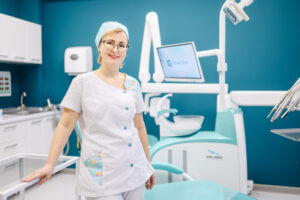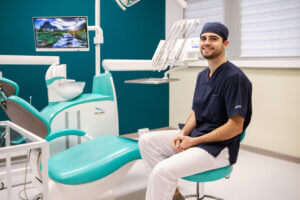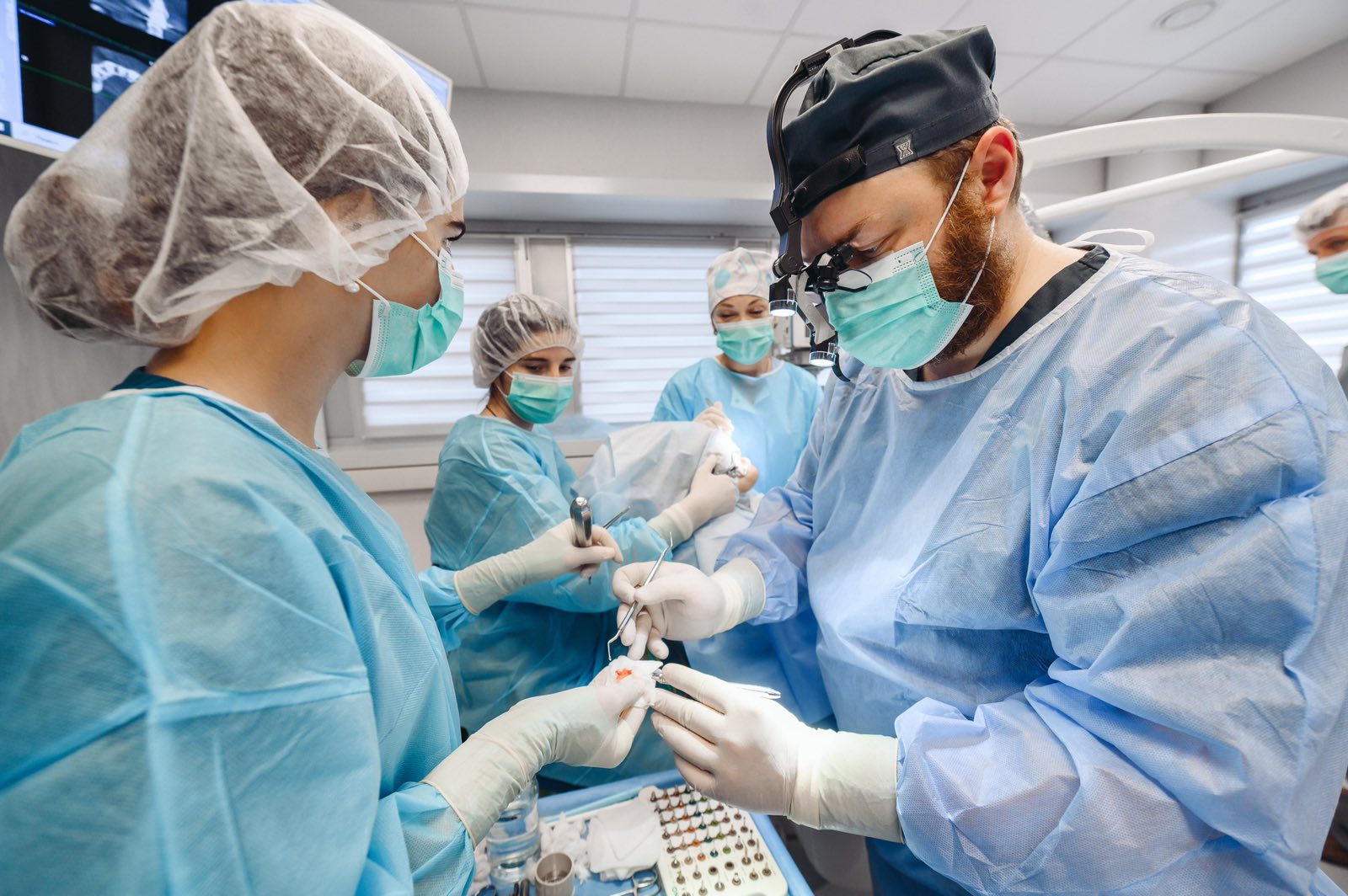2 years ago The beauty of teeth
What are dental aligners and in what cases are they used?

They are used in the same cases as braces (correction of crowded teeth, alignment of the dentition with incorrect position of teeth, presence of gaps between teeth, correction of bite), with the exception of complex pathologies that require a fixed structure (for example, after orthognathic surgery). In addition, aligners are used before installing veneers, if by changing the position of the teeth it is possible to preserve more of your own dental tissue.
In what ways can you straighten your teeth and how do you know when you need aligners?
If a person is dissatisfied with his smile and does not like the position of his own teeth, this is a reason to straighten his teeth. In fact, there are not many effective ways to achieve this goal: braces or aligners can effectively cope with the task. To make the right choice, you should consult an orthodontist.
When you are not satisfied not only with the position of the teeth, but also with their appearance, after straightening the teeth, it is possible to install veneers – overlays on the front of the teeth, which make the smile snow-white.
What are aligners?
Dental aligners are a more modern alternative to braces, which are special orthodontic plastic trays that gradually move teeth into the correct position. When straightening teeth using aligners, you can plan the course of treatment, the number of trays and the final result in advance using computer modeling. Like braces, aligners are installed exclusively on healthy teeth.
Indications and contraindications for the use of dental aligners
 Orthodontic treatment is indicated not only for those who are dissatisfied with the position of their teeth, but also for malocclusion. The following symptoms indicate this:
Orthodontic treatment is indicated not only for those who are dissatisfied with the position of their teeth, but also for malocclusion. The following symptoms indicate this:
- discomfort in the jaw joints;
- worn teeth;
- difficult to chew;
- It is difficult to keep your mouth open because your muscles get tired quickly.
If you have these signs, you should consult a doctor. A consultation with an orthodontist will help you choose a teeth straightening method.
In particularly difficult medical centeral cases, when it is impossible to immediately straighten the teeth into a row with aligners due to their abnormal position (this happens in approximately 1 out of 20 cases), braces are first installed, and from them you can later switch to aligners.
Another contraindication to the installation of aligners is the need for orthognathic surgery with sawing of the jaw and removal of teeth or orthodontic camouflage (for example, the lower jaw is reduced in size so that a gap is formed between the upper and lower teeth, then the upper premolars are removed, after which all the teeth are pulled back and close). In such cases, fixed devices (braces) are no alternative.
Stages of teeth straightening using aligners
Since aligners are only placed on healthy teeth, during the initial consultation you should determine whether pre-treatment is required, and also order additional tests (X-rays or panoramic films) if necessary. If the oral cavity has already been sanitized and wisdom teeth obviously will not interfere with alignment, the doctor can immediately take impressions to make a preliminary treatment design. The computer model is being developed by our long-time partner, the British laboratory Smile Wide Lab.
 At the next consultation, the dentist presents a model that predicts the movement of teeth and its result to the patient, and talks about treatment options, the cost of aligners in Odessa and additional manipulations that may need to be done before that (enamel reduction, installation of attachments). If the patient is not satisfied with the proposed plan, an alternative treatment option is developed.
At the next consultation, the dentist presents a model that predicts the movement of teeth and its result to the patient, and talks about treatment options, the cost of aligners in Odessa and additional manipulations that may need to be done before that (enamel reduction, installation of attachments). If the patient is not satisfied with the proposed plan, an alternative treatment option is developed.
The number of trays for straightening teeth depends on the severity of the pathology: for minor curvatures it can be 10 drops, and for more pronounced ones – 30 drops for the lower jaw and 20 for the upper jaw. Teeth alignment occurs on both jaws, because the teeth must adjust to one another. On average, the duration of treatment with aligners is from 2 months to 2 years.
Within 10-14 days after the consultation, the first set of mouth guards is made. It will have to be worn for the longest time – 3 weeks, because this is the most difficult period when destabilization of the bite occurs. Mouthguards should be worn 20-22 hours a day, removed only when eating and brushing your teeth. In the future, the orthodontist and the patient meet once a month for control: although treatment with aligners is developed on the basis of a computer model, the human body is not 100% predictable, so sometimes teeth move at a different pace and new aligners will need correction. That is why it is optimal not to print all the aligners at once, but to produce new sets gradually according to an individual protocol.
An important advantage of aligners is that, in principle, it is possible to carry out treatment remotely: the aligners are either printed all at once or sent by mail as needed. And visits to the orthodontist take place online, and the patient takes photographs of putting on and removing the aligners. The following sets of mouthguards should be worn for 10-14 days, and changes usually become noticeable every three sets. The movement of teeth occurs gradually to avoid overloading the dental system.
After removing the last set, the patient already sees that he is now happy with his smile, but the completion of treatment is determined by the orthodontist. He checks the condition and position of the teeth.
To fix the achieved result, either a permanent retainer is installed, which is almost not felt and will remain in the mouth for the rest of your life, or the same trays. The period of their use is equal to double the period of teeth straightening, that is, if you wore aligners for six months, these aligners need to be worn for a year, also for almost all day. But if we are talking about minor violations, then you can only wear them at night.
Advantages of aligners
Aligners can be used in the same cases as braces, but have a number of advantages over them:
- Predictability of treatment
If you choose aligners to straighten your teeth, the entire course of further treatment and its result is predicted in advance using 3D modeling. Digital design makes it possible to calculate the duration of treatment, the number of trays, determine the need for additional preparatory operations (installation of attachments that will control tooth movement, grinding of teeth, etc.). If the patient does not like the plan, it is possible to adjust it before installing the first caps. This won’t work with braces.
- Aligners immediately control tooth movement in the right direction
Aligners are made of special orthodontic plastic, which is both quite dense and elastic, so they have the power to gradually move teeth immediately into the correct position. Braces, on the other hand, involve several stages of movement, installation of three different arches and the use of additional elastic bands on individual deformed teeth.
- Patient mobility and independence
In war conditions, when at any moment there may be a need to move to another city or country, aligners are the best choice. After all, traveling with an orthodontic structure in your mouth is already problematic, and if suddenly, for example, the arch of braces falls off, then even more so. At the same time, not all European doctors are familiar with the brace systems that Ukrainian colleagues use, or have their own vision of the treatment process, and therefore may refuse, especially if it is not an urgent case. A person who has chosen aligners does not need a doctor abroad: he can put on all the aligners himself, they are marked accordingly. Under ideal conditions, the patient should visit the orthodontist once every 1-3 months, but for correction, photographic recording at the time of replacing the aligner with a new one is sufficient. The worst thing that can happen is the loss of a mouth guard, but even in this case there are no irreparable consequences; treatment is forced to pause while a new mouth guard is printed and delivered.
If there is such a need, we can immediately print all the trays for patients and communicate online throughout the entire treatment period. We have patients whom we have never seen offline even once: they sent us dental imprints, and we made a simulation and sent them the aligners by mail.
- Moving teeth with aligners is less painful
You need to understand that when changing the position of your teeth, you cannot do without discomfort at all. But the aligners are made of plastic, so at least the treatment will be without cuts in the mouth and bleeding.
- Aligners are almost invisible on the teeth
If you don’t know that a person is wearing aligners, chances are you won’t even notice them from 2 meters away. And when it is necessary, for example, to conduct a photo shoot, the aligners can be removed for this time.
- Possibility of adequate oral hygiene
The aligners are removable, which means they provide the opportunity to thoroughly clean your teeth with brushes and floss, and thus prevent the appearance of plaque and caries. This is extremely important, because each filling changes the surface of the teeth, and for this reason a new impression and new trays will have to be made.
Disadvantages of aligners
The only drawback of aligners is that they are not used in complex medical centeral cases. In some abnormal positions of the teeth, they cannot be straightened out immediately with aligners; this requires braces. But when the hardest part is over, switching from braces to more patient-friendly aligners is quite possible. As our medical centeral practice shows, such cases happen in about one out of 20 cases.
Types of Dental Aligners
Dental aligners are not classified by type; they are the same and are made from the same material. The only thing that may differ is the presence of attachments. These are rectangular composite overlays on the teeth that enhance the effect of the aligners. But attachments are not installed for all patients without exception; this is done if necessary, depending on the specific case.
At what age can dental aligners be used?
Treatment with aligners has no age restrictions; they can be installed on both children and adults. Aligners help to correct both individual minor irregularities in the dentition (frontal crowding or gaps between teeth), as well as completely straighten the teeth and correct the bite.
Share this content:

The author of the article: Danylov Serhii
Dentist
Similar articles

11 months ago
Teeth straightening with aligners: what you need to know?
11 months ago
What is an underbite and why should it be corrected?
2 years ago
Orthodontic devices. Which ones are better?other topics
Ask a Sirius-Dent expert at the consultation

